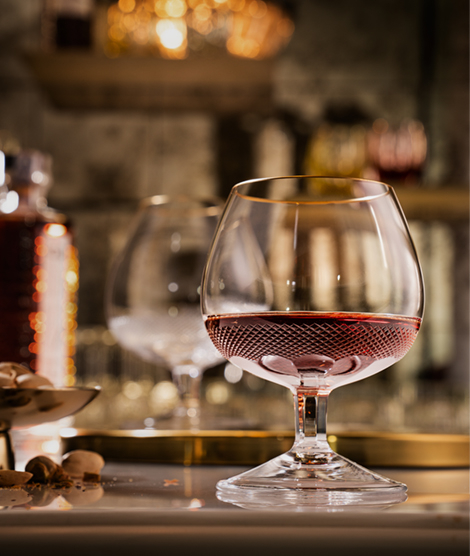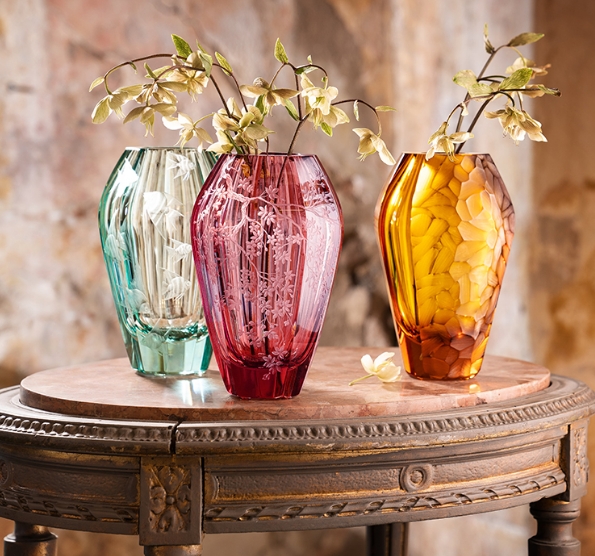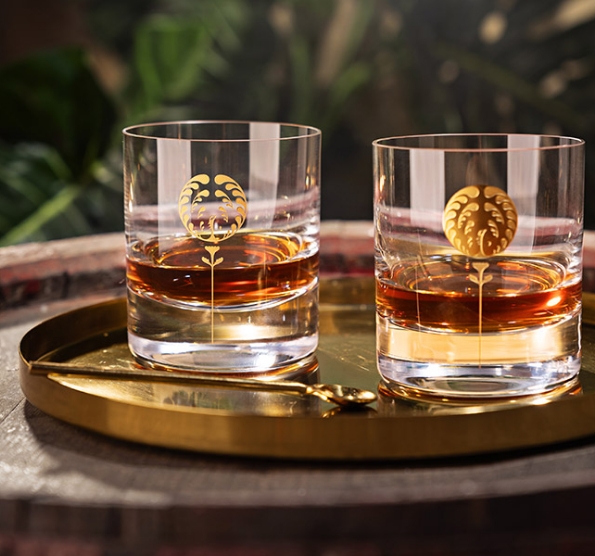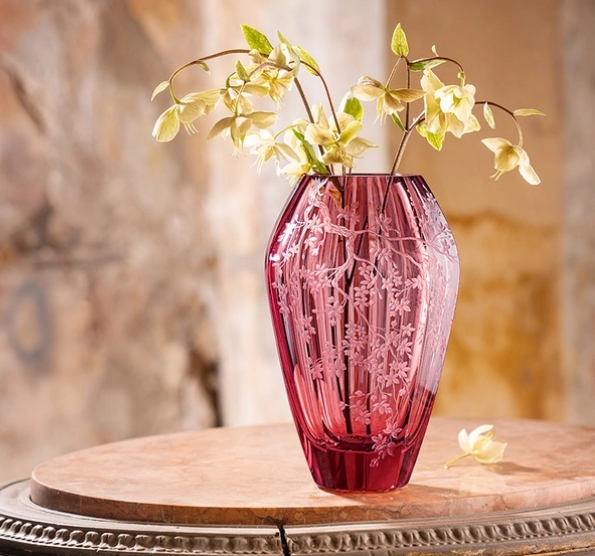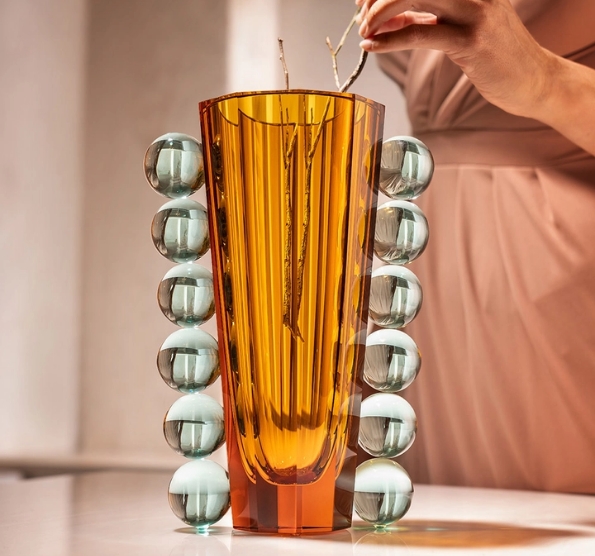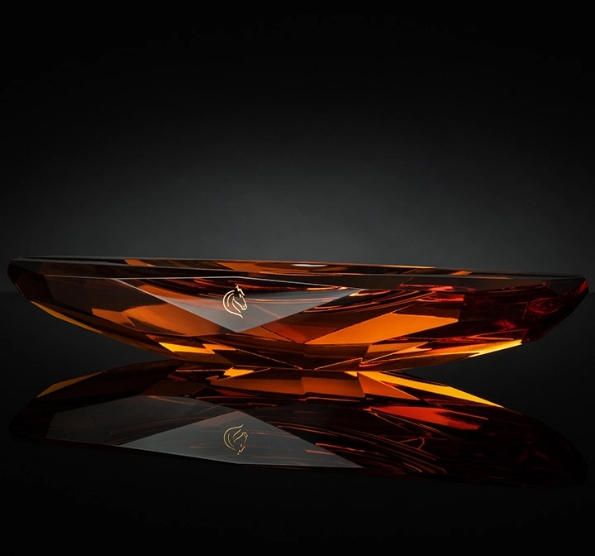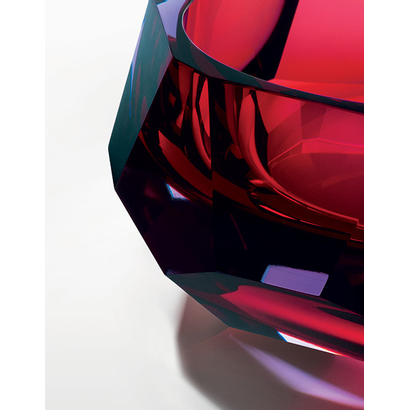
Breadcrumbs navigation
- Home page
- About Moser
- Blog
- Lead-free crystal. What makes it different?
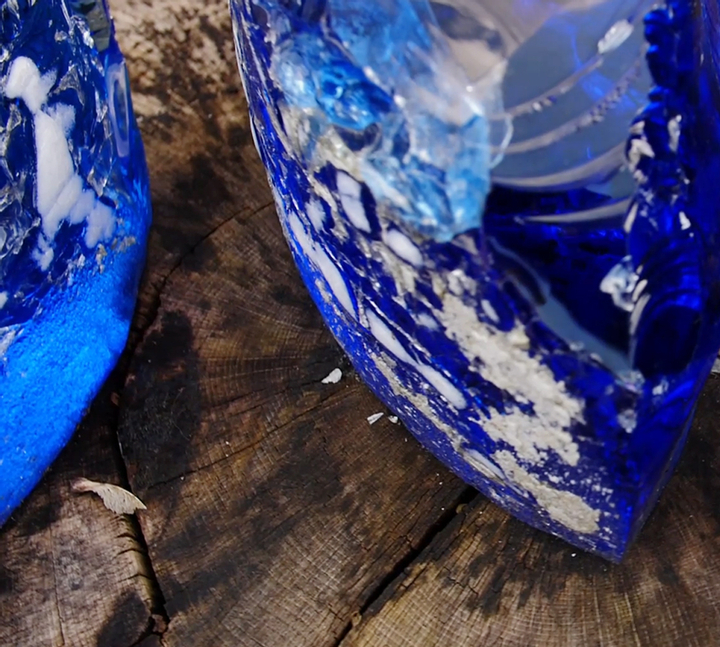
Lead-free crystal. What makes it different?
Imagine you are holding a vase from the Pear collection – a unique design feat, crafted from 25 kilograms of lead-free crystal and cut into perfectly sharp edges. You have the honour with the finest form of glass. It excels in its purity, hardness and optical properties. Lead-free crystal is also more environmentally friendly. Let's take a closer look at it.
While you will still find lead crystal at other glass manufacturers, you would look for it in vain in Moser products. The reason why some glassworks use this heavy metal is simple and purely practical. “It reduces the hardness of glass, which then makes it easier to process, decoratively grind and polish with chemicals,” explains Martin Prokeš, a technologist with ten years of experience in the field. “Adding lead also prolongs the time for which the glass is formable, it melts better and at lower temperatures.” The production of such glass is therefore cheaper. 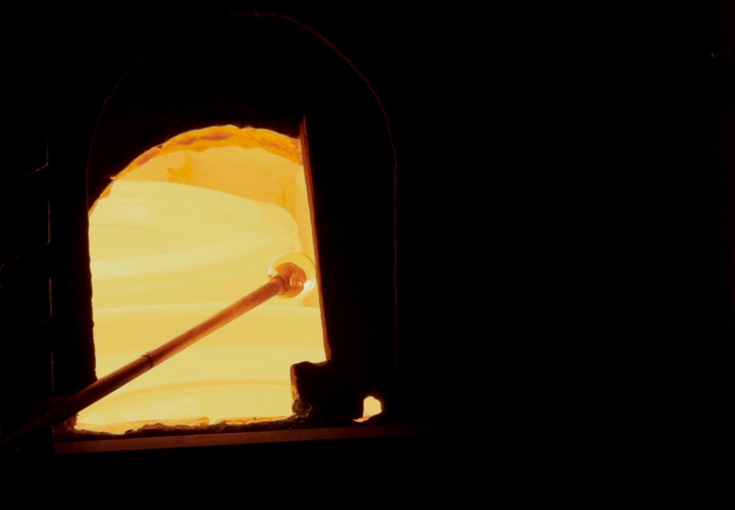
You can often recognise products that include lead at first sight. Just notice the rainbow reflections and prominent glitter, often typical of souvenirs we mostly know from the windows of tourist shops. However, using lead also has more than just aesthetic implications. It affects the environment and the health of those who work with it. “During manufacturing, glassmakers and grinders can inhale lead particles,” explains Martin Prokeš.
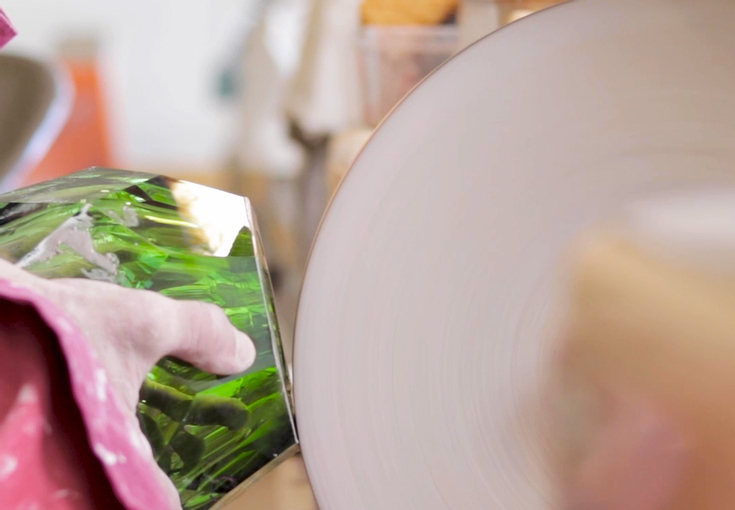
Lead is a burden for nature, not just people. “Melting glass produces emissions and volatile substances, which are then released into the environment,” explains Moser chemist and technologist Mária Šmihulová. At the same time, however, she points out several myths that are circulating about this element, which you would find as Pb, derived from the Latin word plumbum, in the periodic table. “If you drink from a lead glass, you won't get poisoned. Lead is chemically bound in it.” Thankfully, ecology and greater interest in environmental protection are causing the use of lead crystal to decline.
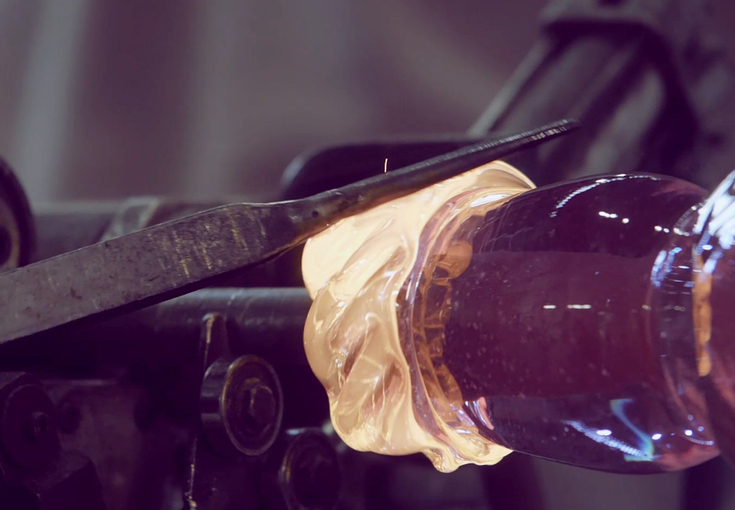
6 interesting facts about Moser crystal
- Moser crystal is a mixture of the highest quality glass sand, soda, potassium carbonate (Potash), limestone and other components. It does not contain lead, so it is considerate to both nature and people.
- Its composition is regularly and strictly checked during inspections: Among other things, they test that it indeed does not contain lead.
- It has a greater hardness than lead crystal, so it is harder to grind. Because of that, the work of grinders is more laborious and demanding. However, hard glass also allows the creation of sharp, hand-polished edges that are typical for Moser. In the case of lead crystal, which is polished by immersing the whole object in acid, the edges are duller and more rounded.
- Thanks to the hardness of lead-free crystal, engravers can use it to carve their masterpieces that are sharp and precise. Last year, Moser engraver Tomáš Lesser was conferred with the title of Chevalier de l'Ordre des Arts Arts et Lettres (Knight of the Order of Arts and Letters) for his life's work from the French Ministry of Culture.
- When it comes to colouring, Moser uses its own colour palette which is based on the shades of selected precious stones. The crystal works of art create a breath-taking spectacle full of colours, light and shadows.Learn more about the individual tones and colouring crystal.
- Moser has been using lead-free crystal since the glassworks was built in 1893 to this day.
